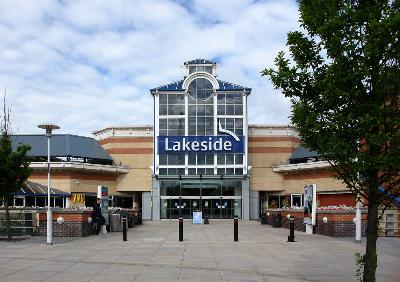Driving instructor vacancies in Basildon
- Jul 08, 2019
I n the recent economic climate, we are awash with experts recommending ways to save money and with over 31million cars on Britain's roads, motoring has not escaped their views.
However, I would suggest the desire to save money conflicts with road safety.
Drive at an appropriate speed
It is commonly argued that driving slower is far safer and economically viable when compared to driving at the speed limit. After all the speed limit is exactly that, a limit and not a target.
Indeed, whilst driving at a slower speed, gives you time to anticipate traffic ahead, sticking to speed limits also helps conserve fuel. Driving at 50 miles per hour (mph) instead of 70 mph can improve fuel economy by 25 per cent.
How often would the typical driver need to drive at these speeds and over what distance would they travel to save money?
An example of one of my regular drives each week would involve driving from Basildon to Lakeside in Thurrock.

Judging by the amount of traffic I pass and then join in the car parks would seem quite typical. This 14 mile journey would save me on average, just 70 pence each way otherwise.
There is no need to feel guilty for driving at less than the speed limit if that is what safety requires, and I would never condemn anyone for doing so.
Excessive speed is a causal factor in relatively few accidents (less than 10 per cent).
Nevertheless, crude or not, speed limits save lives, and nobody in their right mind would argue against their sensible application.
Irrespective of what limit is attached to a particular section of road, and whether it is sensible or not, we all have a duty to drive legally and, more importantly, safely.
Like other responsible drivers, I may choose to drive below a given speed limit if it isn't safe to proceed any quicker. But this requires judgment. To drive along a motorway at 30mph in good conditions because I didn't want to go any faster would not be a safe thing to do.
Slower is more dangerous

Yes, I acknowledge that driving in general is dangerous but, having cars moving both very fast and very slow on the same road can cause problems.
I commonly get an alarmed reaction from experienced drivers when I suggest, driving slower is actually dangerous.
It is said of some drivers that they have never have had an accident but have caused hundreds, and there is an element of truth in that stereotype.
Slow drivers are one of the biggest dangers on the road and should be treated like speeders.
For example, if you drive at 40mph in a 50mph zone when there is no justification for such caution, you should not be surprised if a queue of drivers builds up behind you.
This slow moving hazard can wreak havoc on the tempers of following drivers, and their increasingly desperate attempts to overtake or undertake, can be highly dangerous.
Although it's foolish of them to take risks, the slowcoach at the head of the procession must share some of the responsibility for allowing the situation to arise.
Nearly a third of motorists have had a 'near miss' caused by someone travelling slowly.
We have all experienced many drivers who travel everywhere at a steady 40mph, sometimes 20mph below the speed limit on the open road, but 10mph above the limit in villages and towns.
Transport Department figures show 143 accidents a year are caused directly by slow drivers.
Although minimum speed limits are enforced on some UK motorways, there are few preventative measures that are used widely
In 2011 the government introduced a scheme which allows for £100 on-the-spot fine for careless driving-including those that drive too slow, though there is little evidence of this being taken seriously by the authorities.
Official recommendations
If drivers really don't feel comfortable at a higher speed, allow following drivers to overtake you, as The Highway Code demands.
Indeed, drivers are encouraged to drive to their limitations based on age and physical ability but simply driving through a lack of understanding is far from acceptable.
I have frequently taught drivers that feels comfortable driving at 20 mph slower that conditions and limits suggest and teasingly suggested driving even slower to feel more safe. In these cases, the offender has usually remarks that this would be too slow.
Interesting then that when this belief, regarding what the individual considers safe compared to economic savings is questioned, saving money becomes less important.
Conclusion
Drivers are able to save money when driving by considering their driving style whilst not compromising their own or other road user safety.
Journalists would be more justified in examining the consequences of offering advice that relates to a one sided current trend.
Find out how simple actions like driving smoothly, changing gears at the right time and clearing out clutter can save you fuel and reduce emissions.
The way you drive and look after your car can make a big difference to how much fuel it uses as well as its impact on the environment and safety.
Recommended reading: Dangerous slip road in Basildon gets driving test ban